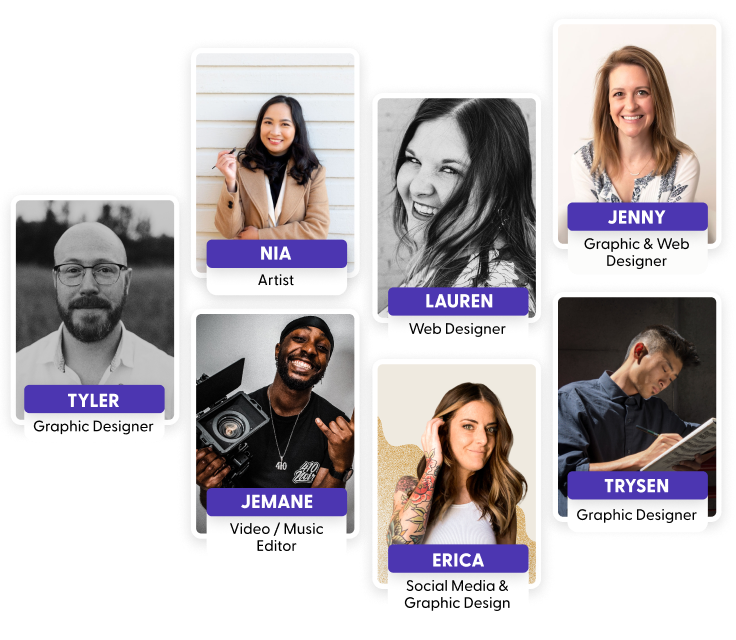Blogs are an important part of everyday life. About 77% of internet users are reading blogs daily, and some of these people are reading two or three blogs a day. And this gives opportunities for blog owners to create a revenue stream for themselves.
In this article, we will look at why and how you can use blog sponsorship to help you generate income from your passion. We will also look at how Indy can help website owners to build a successful blog business using sponsored blog posts from businesses willing to pay for exposure to your audience.
How to Earn Money from Your Blog Posts
Most bloggers are looking for money-making ideas but often don't see the obvious—their content is the best asset they have for their business. When you create a sponsored blog post business plan for your website, you can attract sponsors who will pay you. There are several ways that you can have a sponsored blog post. Here are some suggestions on how you can make money from sponsors.
Sponsored blog post
The first is the most simple; it is when you have a paid guest post on your blog that people read. This is the easiest option as it requires the least work from the blogger. There are some disadvantages when it comes to this type of sponsored post. For one, if there is a mismatch of tone or message, then audiences can be reluctant to read; you might reduce readers' trust, and readers might abandon your brand.
However, the money can often be good for the amount of work involved in the marketing of the content.
Brand mentions within blog content
Another option is to insert a mention of the brand, the brand product/service, or an event into a blog post. You might, for instance, create a blog post of helpful tips and one of these is a mention of how the brand can help. If you have written an informative article, the value of the addition of the brand will be more trustworthy to the audience.
Part of the problem with this is that sometimes brands don't feel the content is very specific to them. However, this type of marketing is known as native marketing, inserting marketing messages into content that is more natural and effective. If you want to attempt this type of strategy, you will need to be more specific on the benefits of this sponsorship opportunity.
Affiliate links
Many bloggers use affiliate marketing to generate income from their blogs. Affiliate marketing is a simple and effective solution, and many brands utilize this strategy because they only have to pay content creators based on results. However, it is not regular income for the blog owner, and sometimes payouts can be minimal.
Many brands start by having affiliate links to large eCommerce brands like Amazon. However, the rates of pay are usually about 1–2%. In contrast, many local brands or software companies are willing to pay commissions that are between 20–50%.
And affiliate marketing only really makes sense when your traffic levels are significantly high because conversion rates can be as low as 0.5–1%.
How to Attract Brand Sponsorships
To get any of the blog sponsorship opportunities for your website, you need to have a solid plan on how you can attract brands to your programs. There are several things you can do. Use the following checklist as a way to ensure you attract brands.
Media kit
The first thing that you should have is a media kit for your website. The kit is a lot of information that demonstrates the value of working with you and includes branded items such as the blog logo and what brands can use when they're working with you. Your media kit should be included on a sponsor page, one that is dedicated to getting brands to get in touch with you.
Make sure that you include contact details for sponsored content on your sponsor page. Most brands will prefer to email you about sponsored posts. They are unlikely to contact you via Facebook or DM on Instagram.
Statistics
Your platform is not just enough. You need to show that you can attract readers to your blog and that your social media presence can help promote their content and their brand. The relevant information you want to include are details like monthly pageviews, engagement in the comments section, and what previous sponsored posts have achieved on the blog.
You can include this relevant information on a sponsor page, along with a media kit. For lots of data, try to add graphics to the sponsor page; it makes it stand out more and improves the readability.
Pricing
You might also want to consider what pricing levels you are offering. Within the pricing package information, you want to include information about what the brands will get. Don't just include the set deliverables, but also the benefits. You might also want to offer several sponsorship levels.
Think about pricing structures that can include lots of different elements. For instance, do you offer multiple sponsored posts at a discount rate? Or should sponsored posts all be at the same price?
Get a presence across the internet
Your blog might be one aspect that brands will like, but local businesses and national corporate entities want to see their content published and promoted across multiple channels. For instance, social media, email marketing, and other channels. Therefore, you need to display that you have a good following on other channels.
Consider using a YouTube channel as well. YouTube is the second largest search engine by search volume, and you can use the videos you publish there to be included in the sponsored blog post. Videos on a blog post help the content to rank higher and, therefore, can improve website traffic.
You might also want to consider using other platforms like TikTok, Instagram, Facebook, and Pinterest.
How to Negotiate with Brands
When it comes to deals with brands, you need to be sure that you can negotiate with them. If you have the statistics mentioned previously, then you can create a proposal easier. You can also use proposal templates to speed the process up and make your offer look like a proposal.
There are numerous steps to negotiating with brands when they contact you. These steps are as follows.
Step 1 - Read the initial proposal from the brand
The first thing that you will get is an inquiry from the brand. They might ask you what you offer, what prices are, and how they can move forward. They might tell you more about the product and service that they offer, or it might be very brief.
What you need to do is look at the prospective sponsors and see if you can work with them. Write down who they are, what they offer, and other information that they've included in the email.
Step 2 - Research the prospective sponsor
The next step is to research the prospective sponsor; you want to connect brands to your audience that are going to be relevant to them and are aligned with your ethical approach. For instance, if you're a brand advertising the latest video games on a console, you don't want to be working with a brand that sells games for the PC. They might be similar niches, but they're not the same, and your audience will be confused.
You also need to look at their brand on social media. How are they talking to their audience, what are their reviews like, and what is their reputation? You want to get paid sponsorships from brands that your audience will respect.
Step 3 - Respond to the sponsorship proposal
Now you can respond to the potential sponsor's email with the options that are available to them. When offering them potential sponsorship opportunities, remember to add the benefits of each option. For instance, include the reach, potential audience engagement, and other statistics.
You need to state what requirements there are for any sponsored posts that you would publish on your website. You might, for instance, require sponsored posts to be at least 1000 words long or only have one or two links to their website. You need to include these clearly, so the brand can determine whether you two can work together.
You need to also include the payment options. You need to say how much companies pay and the terms and conditions of all payments.
All options that you're offering should sound like a win-win for the brand. They need to know you are offering paid campaigns that benefit both you and them.
Step 4 - Await a response
After sending the email, you might need to wait for a while. Sometimes they've sent out dozens of feelers to you and other bloggers and are looking for what others have written and offered. But that doesn't mean you have to wait forever.
If you don't get a response from the potential sponsor within 3–5 days, you can send them a follow-up contact. This email should remind them of what you're offering and ask if they had any questions about the sponsored blog posts and the process.
Step 5 - Negotiation
You might now need to negotiate with the brand about the sponsored post service you offer. Blog sponsorships can require significant negotiation as there are so many different moving parts to the process. They might have requests that you can't meet, or you might want to charge more money for certain requests.
Negotiation can be done over email, or you can set up video calls with the blog sponsors. Video is much easier as you can quickly wrap up negotiations with potential sponsors.
Step 6 - Contract for sponsored blog posts
Once you've concluded the negotiations, you need to send a contract for the brand to look over and sign. In the contract you need to state what the company pays to publish sponsored posts on your website. You should also note what other services are included, like social media content, email marketing, etc.
A specific list of times and deadlines should also be included. Sponsored post websites need to be run like a magazine or newspaper; you have deadlines in which to meet for all content, and sponsored content should also follow deadlines.
Step 7 - Run the campaign
Once you've got the contract signed, you can then start to work on the sponsored blog posts. It might be that the brand is providing you with sponsored blog posts to publish on your website. Or it could be that you have to create sponsored content for the client.
To help you run this, you can use a digital calendar that can help you set up tasks, subtasks, and deadlines to ensure the sponsored blog posts get published at the right time.
All sponsored blog posts should include a disclaimer that mentions the content was paid for. This allows for all content to follow laws in numerous countries.
Step 8 - Promote content
Remember to heavily promote the sponsored post across your network. For example, promote the content to your social media followers, an email marketing list, and improve your site's paid advertising to improve website traffic.
The more traffic that you can generate for your blog, the happier your sponsorship partner will be.
Step 9 - Collect payment
Now you need to consider collecting the payment for the blog sponsorships. Blog sponsors pay quicker when you have a professional invoice and send it promptly. In the media kit, you might have mentioned how the company can pay, but you always remind them of the best payment method on the invoice.
Be sure to include a due date on all invoices.
How Indy Can Help Blog Sponsorship on Your Website
Indy is an all-in-one tool for freelancers that significantly streamlines the process of finding, acquiring, and managing sponsors for your blog and blog posts. With its robust set of features, it provides a one-stop-shop for all your freelance business needs. This includes keeping track of potential sponsors, managing contracts and proposals, and even handling invoices and payments. Its user-friendly interface and range of functionalities make managing your blog sponsorships a breeze.
- Contact Management: Use Indy's lightweight CRM capabilities to keep tabs on all your contacts, including potential and current sponsors. You can easily track all the invoices, files, and other documents you've shared with them.
- Contracts and Proposals: Impress potential sponsors with Indy's easy-to-create and professional-looking contracts and proposals. These tools not only help you establish new sponsor relationships but also ensure you both are on the same page regarding the terms of the sponsorship.
- Invoicing and Payments: With Indy, you can create an invoice in minutes and your sponsors can pay it online using major payment options like Stripe and Paypal. This ensures a smooth and timely payment process for your sponsorships.
As a freelancer, it can often feel like you're juggling a million things at once. But with Indy, you can simplify your work, save time, and focus on what you do best—creating great content for your blog. With all the different parts of your freelancing life integrated under one platform, it's easier than ever to keep track of everything. So why not give it a try? Start managing your blog sponsorships like a pro with Indy.
Conclusion
When you run your own blog, you are going to be looking to attract sponsored post opportunities to earn revenue for your website. By following the steps above and ensuring that you have all the relevant information about what you can achieve, you could earn significant levels of income from the opportunities available.
And to get there quicker, use Indy’s vast resources to help you become more professional and communicate better with potential clients.




